UNIT 4- Money and Monetary Policy
Definition of Money
Money = anything that society accepts as payment for goods and services
Functions of Money
Medium of Exchange
used by people when they buy and sell goods and services
Unit of Measurement (Account)
money specifies the value of something
Store of Value
money is a way to store value from the time people receive it to the time people spend it
putting money away for future use
Characteristics of Money
Money should be portable, divisible, durable, familiar, acceptable, not easily reproduced, stable in value (limited supply)
Types of Money
Commodity
money that has value apart from its use as money
gold, silver, etc.
Representative
money that can be exchanged for something else of value
Fiat
money that has no value except as its use as money
dollar bills
Demand Deposits/Debit Cards
checking account money
Money Supply Measurements
M1
narrowest definition of money supply
consists of currency in circulation (largest part), demand deposits, and travelers checks
M2
everything in M1 plus near money
near money = savings accounts, small time deposits (deposits less than $100,000), money market mutual funds held by individuals
M3
everything in M2 plus large time deposits (deposits over $100,000), money market mutual funds held by institutions
most broad definition of money supply
Liquidity = the ease with which assets can be turned into money
M1 is most liquid because your cash, checking account, and travelers checks are all liquid cash
Money Supply Curve
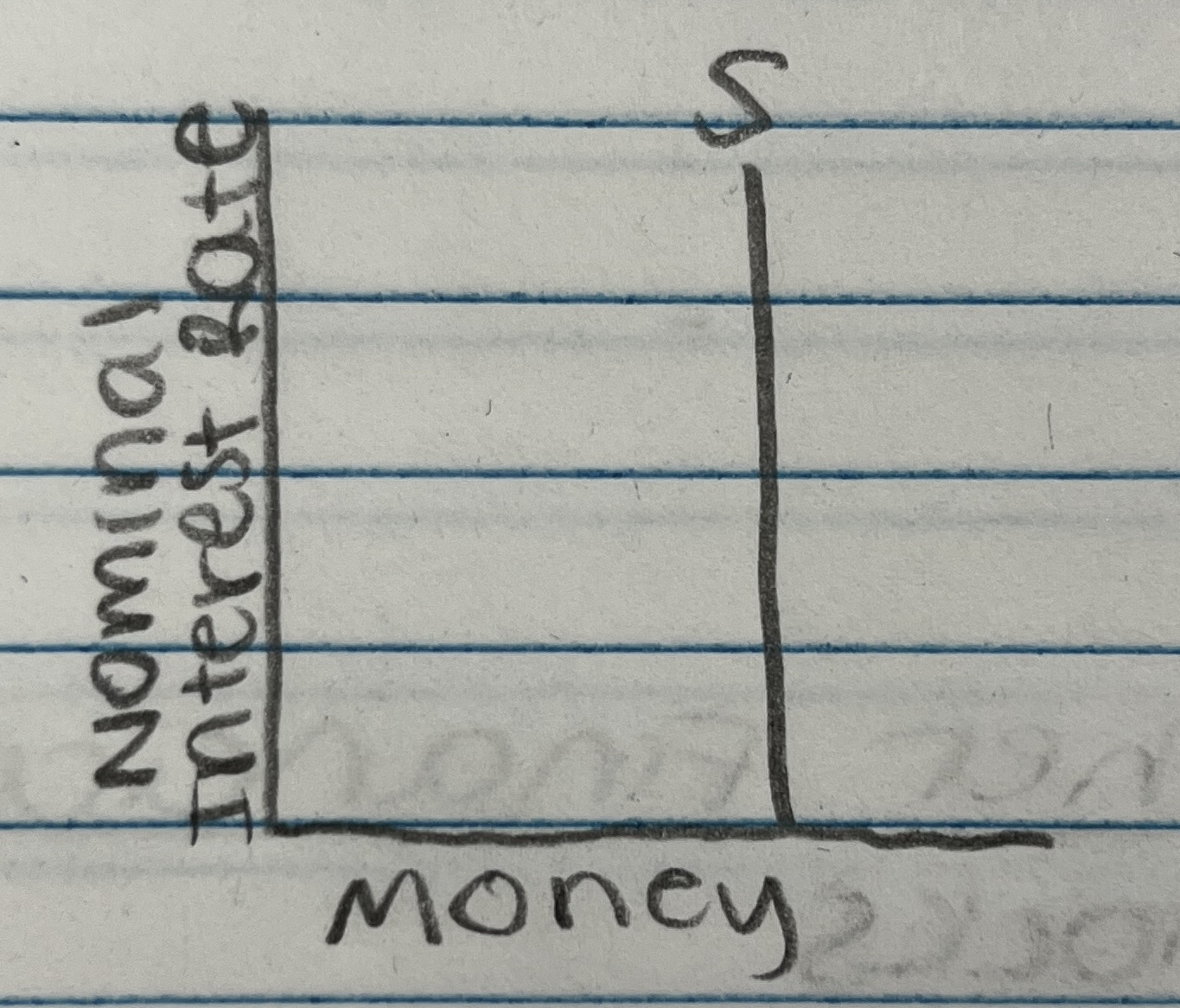
vertical because interest rate is controlled by Federal Reserve System
Money Demand
Determinants of Money Demand
Aggregate price level → as price level increases, demand for money increases
Changes in Real GDP → real GDP increases, demand for money increases
Changes in technology → Venmo… less money is needed
Changes in regulations → interest rates on checking accounts… people put more money into checking accounts
Money Demand Curve
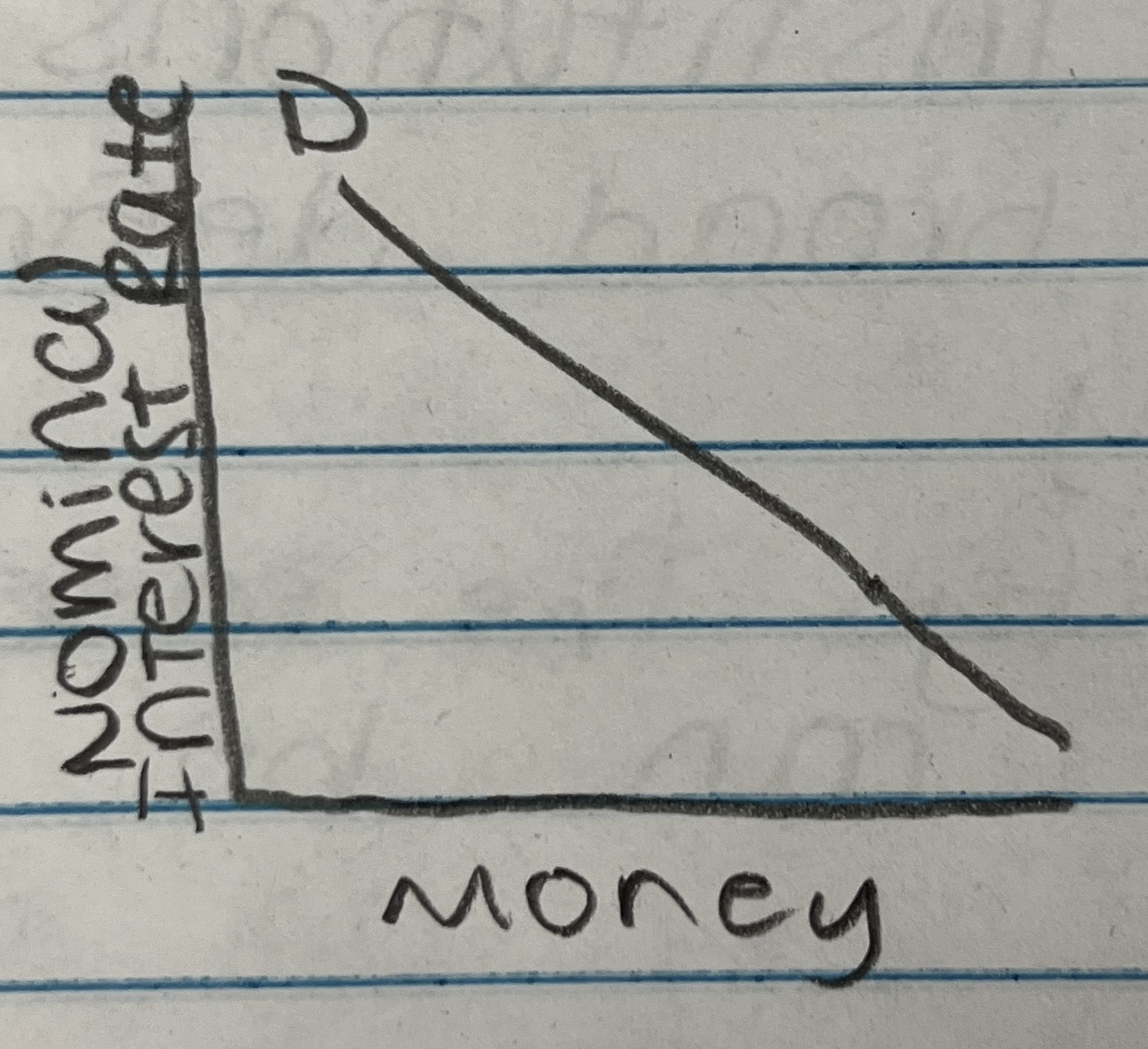
Time Value of Money
the earlier you start saving, the more you’ll have in the future
Other Financial Instruments
Stocks
own part of a company through owning shares
Bonds
loans to the government or corporations
Equation of Exchange
MV = PQ
M = money supply
V = velocity
number of times money is spent
P = price level
Q = quantity real (output)
P x Q = nominal GDP
MV = nominal GDP
How is Money Created?
Loans
when money is loaned, the money supply increases
when loans are paid off, the money supply goes down
Reserves
Required Reserves → quantity of reserves (or money) banks are required to hold
Excess Reserves → quantity of reserves (or money) banks hold in excess of required reserves
“fully loaned” or “loaned up” → zero excess reserves
banks get ability to lend money by excess reserves
Total Reserves → required reserves + excess reserves
Federal Reserve System
Organization
12 regional banks - each one has a President
Washington D.C. - 7 Member Board of Governors (serve 14 year terms)
every 2 years, someone’s term expires
President of U.S. nominates someone for the seat when a spot is open
one chairman of the seven → serves a 4 year term
current: Jerome Powell
Functions
to serve the banking needs of the federal government
to act as a bankers bank
controls the supply of money (most important)
looks at unemployment rate, inflation rate, economic growth, etc… uses that to control supply
Money Market Equilibrium
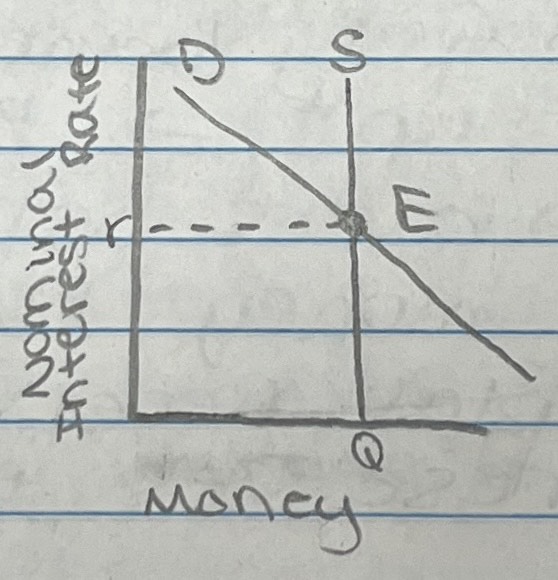
Investment Demand Curve
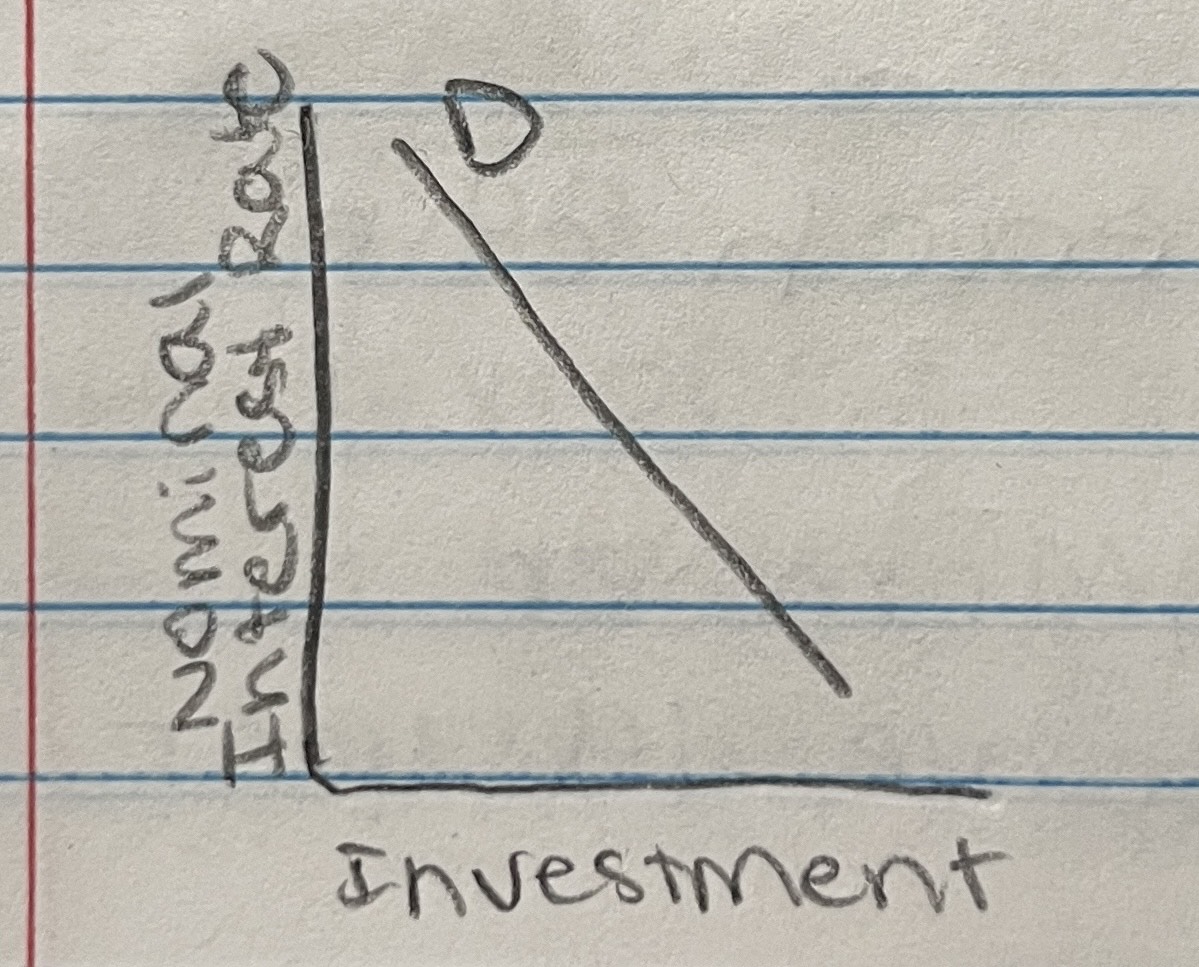
gross private domestic investment
low interest rate, increase investment
high interest rate, less investment
Monetary Policy
the deliberate actions on the part of the Federal Reserve to either increase or decrease the supply of money
Expansionary:
“easy” money
increase money supply, used to fight a recession (unemployment)
money market graph, supply curve shifts to the right → interest rate decreases, aggregate demand increases
Contractionary:
“tight” money
decrease money supply, used to fight inflation
money market graph, supply curve shifts to the left → interest rate increases, aggregate demand decreases
Tools of the Federal Reserve System
Reserve Requirements
most powerful tool of the FED
least often adjusted
defined as a specific percentage of bank deposit liabilities
a deposit to the bank is a liability to them
someone deposits $1,000 and RR is 10%, bank is required to hold $100, $900 goes into excess reserves can be loaned out
expansionary policy: decrease RR
contractionary policy: increase RR
money multiplier = 1 / required reserves
multiple expansion of money supply = money multiplier x initial excess reserves
T-Account (Bank Balance Sheet)
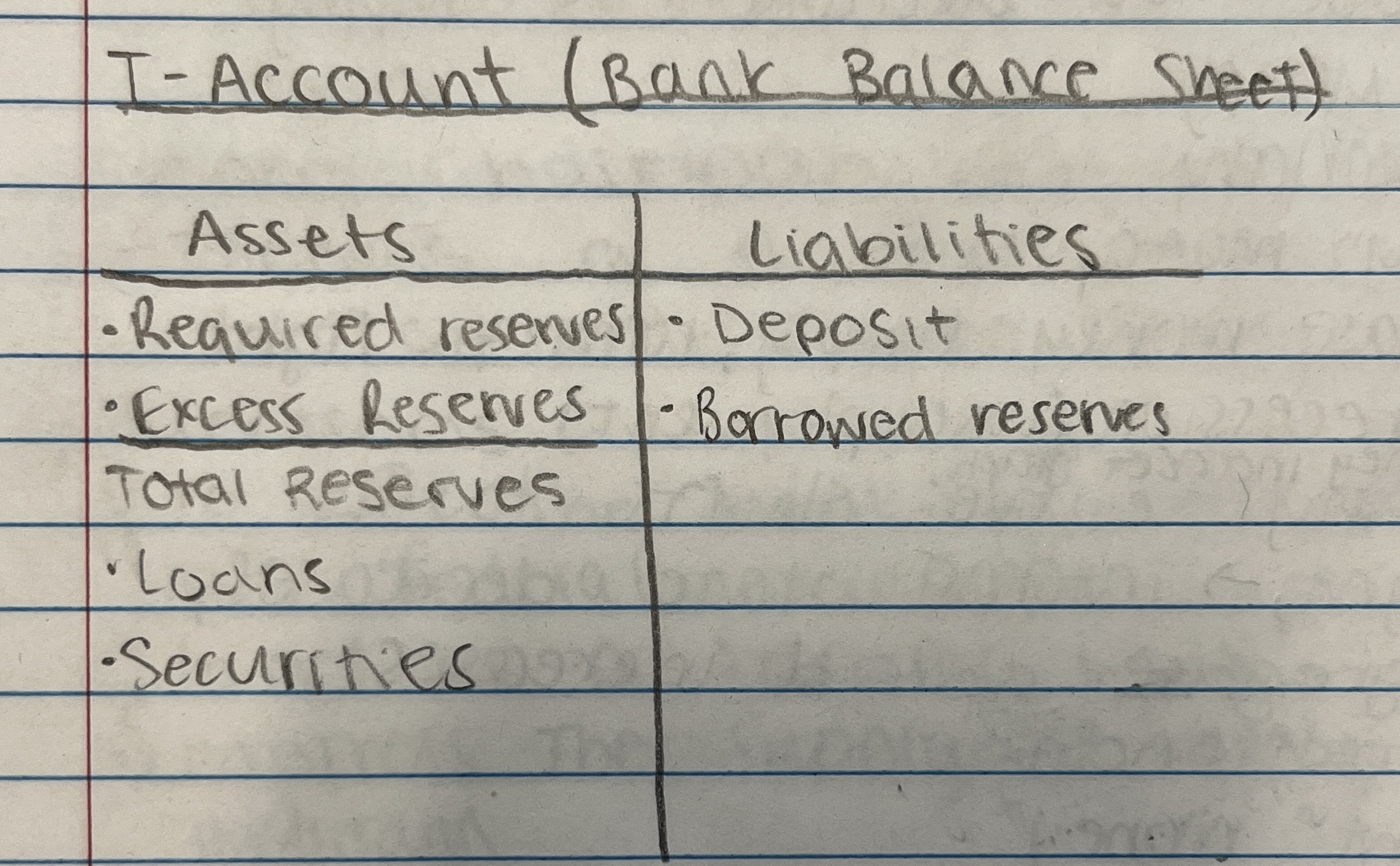
Discount Rate
rate the FED charges banks to borrow money from the Federal Reserve
expansionary: decrease discount rate
contractionary: increase discount rate
Open Market Operations
FOMC (Federal Open Market Committee)
7 member board of governors
New York Federal Reserve Bank President
4 Federal Reserve Bank Presidents that serve on a rational basis
most common tool of the FED
FED purchase or sale of government securities (bonds/T-bills)
expansionary: FED purchases (increase bank reserves)
contractionary: FED sells (decreases bank reserves)
Federal Funds Rate: the rate of interest one bank charges another for loans
Open Market Operations influences the Federal Funds Rate
buying securities → lower federal funds rate
selling securities → raise federal funds rate
Money Market Graph v. Loanable Funds Graph
Money Market Graph
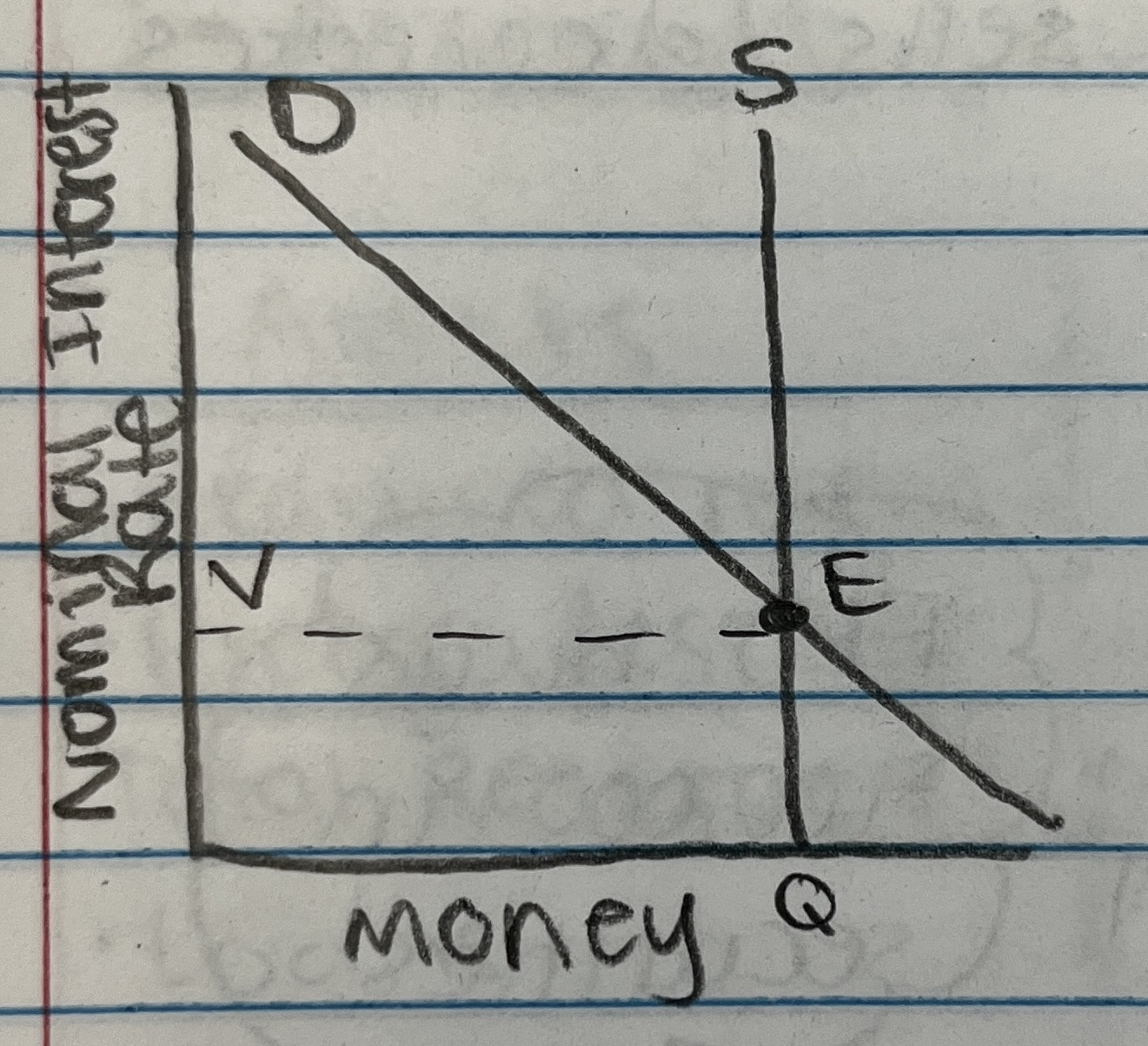
deals with short term loans
Loanable Funds Graph
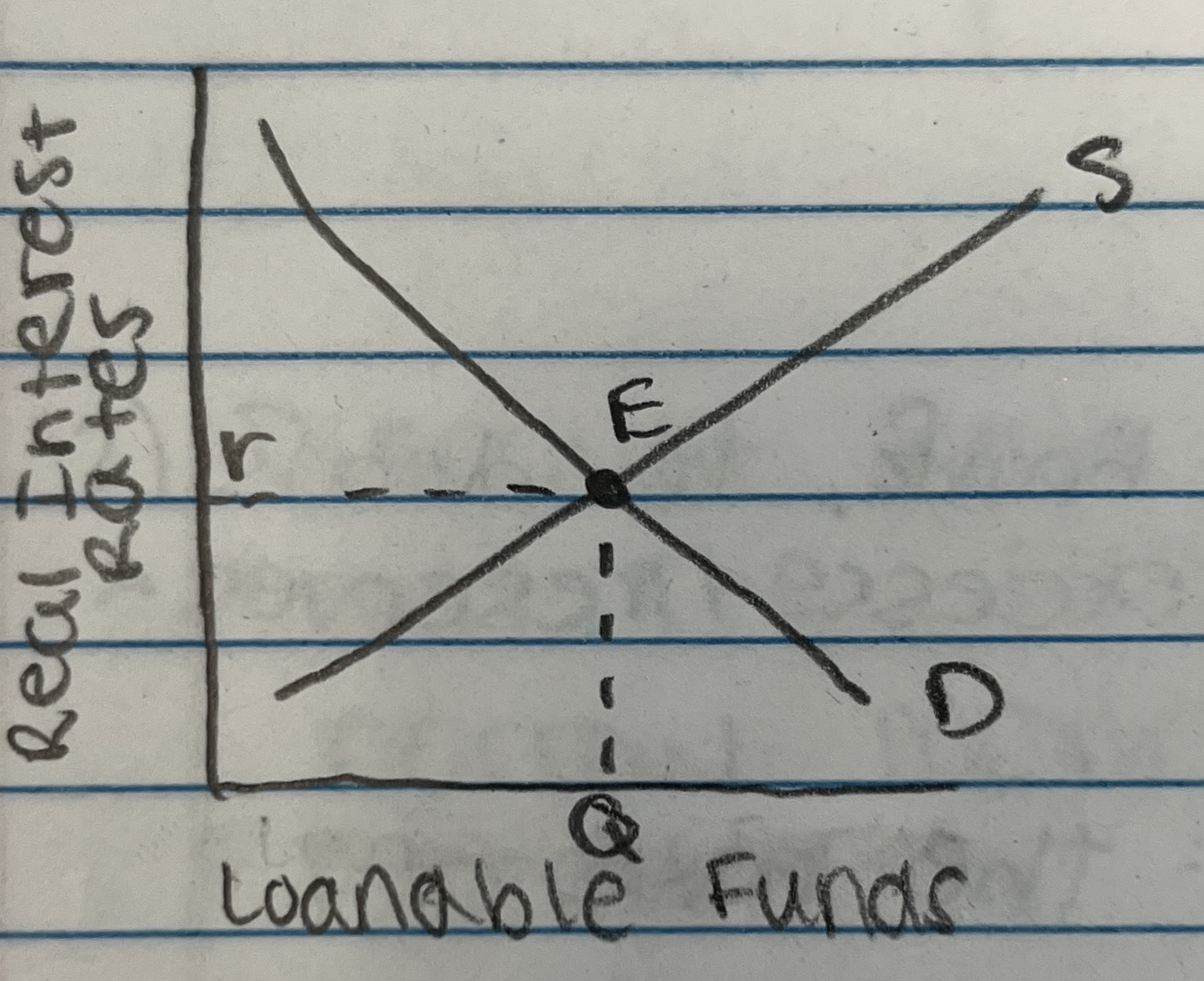
deals with real rate of interest
primary source of loanable funds is savings
deals with long term loans
Limited vs. Ample Reserves
Limited Reserves
reserves are scarce
a small change in supply of reserves shifts the money supply and will change the interest rates
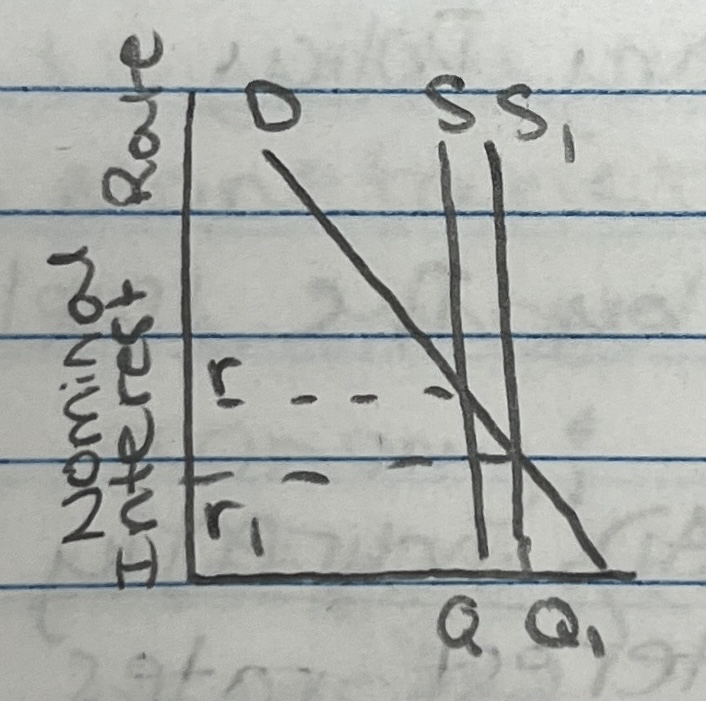
Ample Reserves
banks hold high levels of excess reserves, so changes in supply of reserves won’t change the interest rate
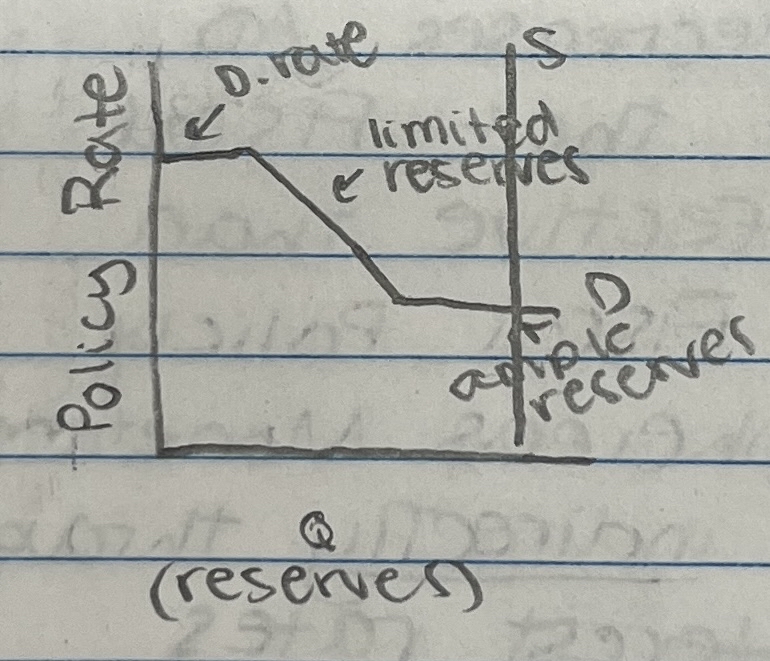
Interest on Reserved Balances (IORB) — the interest paid by the Fed on balances held on reserve
increasing the IORB will lead to banks holding more reserves and lending less
lowering the IORB will lead to banks holding less reserves and lending more
changing the IORB will change the policy rate
Differing Views of Monetary Policy
Keynes
output is determined by the level of AD
Monetary Policy affects AD indirectly through its effect on interest rates
Expansionary Monetary Policy decreases interest rates, which increases investment, which increases AD
Contractionary Monetary Policy increases interest rates, which decreases investment, which decreases AD
Keynesians believe that Fiscal Policy is more effective than Monetary Policy - Fiscal Policy works directly whereas Monetary Policy affects AD indirectly through its effect on interest rates
Monetarist Theory
Milton Friedman
Importance of the Equation of Exchange: MV = PQ
increase M by 3%-5%, real GDP will increase by 3%-5%
velocity must be constant
increase M by <3%, real GDP will fall and may cause a recession
increase M by >5%, leads to inflation
upward sloping AS curve
Monetarists believe money has the most direct effect on the economy; Fed should target money growth rates and not interest rates